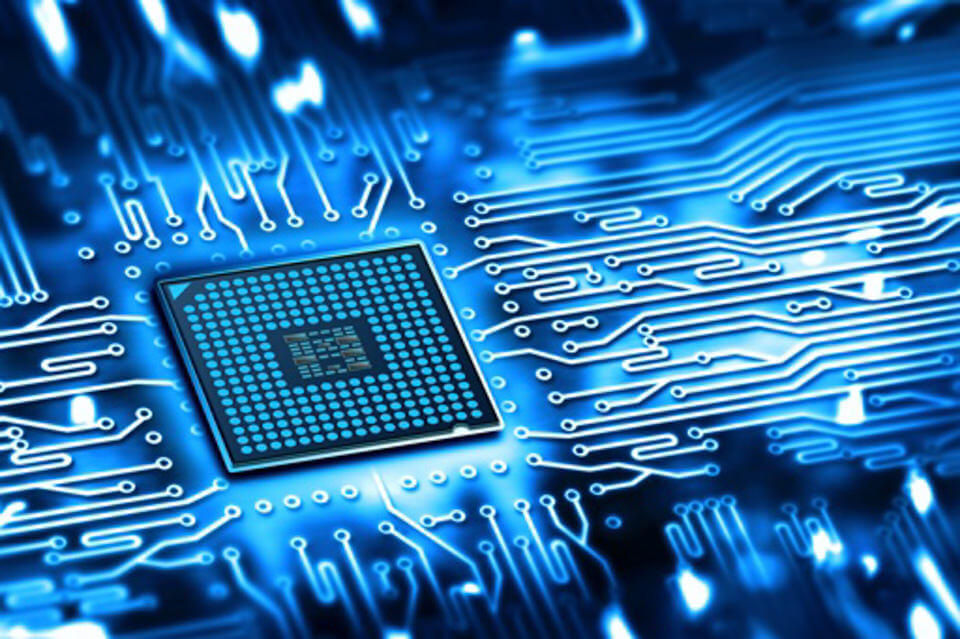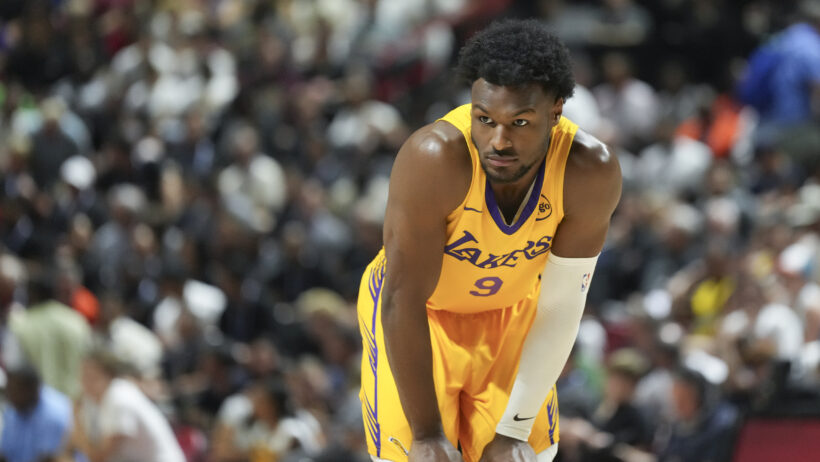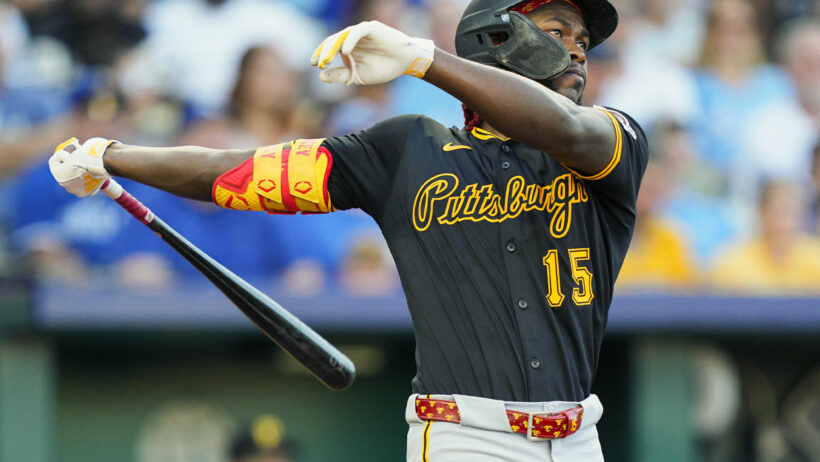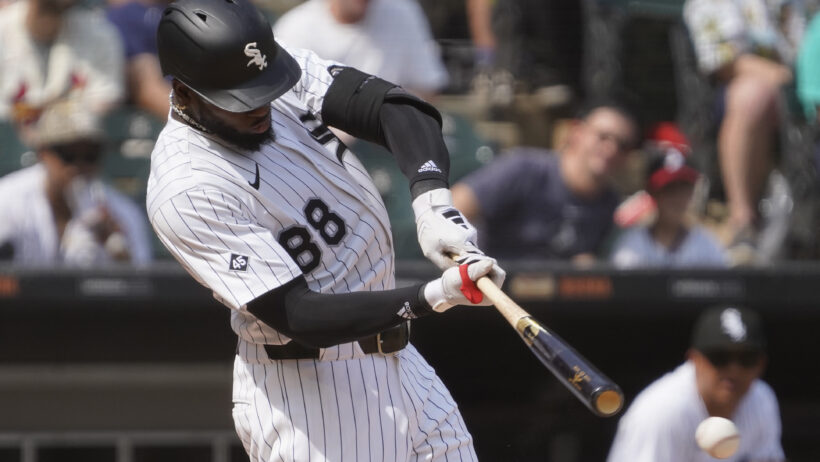Sports Tech: Taking Our Umps
By Ryan Murphy in Entertainment
Updated: January 17, 2018 at 9:38 am ESTPublished:

There’s a technological revolution happening in America, and it’s taking place in our stadiums and ballparks. Forward-thinking organizations like the NBA, NFL, and Major League Baseball are all embracing the latest and greatest technology in an attempt to improve game-play and enhance viewer experience. Their commitment to innovation can be seen everywhere from the massive new “halo board” in Atlanta’s Mercedes-Benz Stadium to the two-way headsets used by quarterbacks and offensive coordinators.
We’ve rounded up five brilliant new innovations that are about to become a major part of the professional sports landscape. Some are smaller than a nickel and others can’t be seen at all, but their impact will be felt for years to come.
Eye Robot
Whenever you go to a baseball game, you can always count on three things happening: 1) someone will spill a beer while trying to catch a foul ball; 2) someone will smear mustard all over their shirt; and 3) an umpire will blatantly blow a call. We can’t do much to prevent the first two inevitabilities, but we can make sure that a game isn’t decided on a strike that should have been a ball.
Anyone who has seen a televised game over the last five years knows that every Major League ballpark is equipped with cameras which track the speed and trajectory of every pitch. It’s an integral part of each broadcast and it underscores just how often umpires make the wrong call. We know it; they know it; and even Commissioner Rob Manfred knows it. Baseball’s big boss recently chatted with the Associated Press about the possibility of phasing out human umpires in favor of computerized technology.
“It would be a pretty fundamental change in the game, to take away a function that has been performed by our umpiring staff, really with phenomenal accuracy,” he said. “The fact of the matter is they get them right well over 90% of the time. There is a human aspect to that, a work aspect to it, that’s always been an important part of our game. I don’t think you can just jump to the conclusion that if you have [the] technology to do it that’s the right thing for your product.’’
We appreciate Manfred’s reluctance to part with tradition, but it is possible to have the best of both worlds. Back in 2016, former Major Leaguer Eric Byrnes participated in a fascinating experiment when he umpired a minor-league game between the San Rafael Pacifics and the Pittsburg Diamonds. Rather than using his eyes to call balls and strikes, the animated player-turned-broadcaster relied on the computer data delivered to him from the stadium’s PITCHf/x software program. Fans got to enjoy Byrne’s antics, while players got to enjoy the fact that every call was (in theory) 100-percent correct. It was a win-win situation.
Some will argue that the technology still has its flaws and needs further development and testing before it’s deployed in the majors. But the league already uses robots to test and grade human umpires, so they clearly have confidence in its accuracy, and it could be coming soon to a ballpark near you.
Odds Major League Baseball will adopt full-time robot umpires by 2020: 49/1
Whoop, There it Is
DeAndre Jordan spent the first half of his career obsessing over the number of rebounds and blocks he piled up. These days, he obsesses over his recovery rate and heart-rate variability. The Clippers center is just one of dozens of NBA players who use a Whoop fitness band to measure their personal vitals 24/7.
The biometric device has five sensors that are constantly collecting and analyzing data. They let the wearer know whether they’re undertraining or overtraining, whether they need to hydrate, and how much sleep they require to make a full recovery. Whoop has the potential to reduce injuries and improve performance, but so far it’s not allowed to be used in NBA games. In fact, Jordan got in hot water this February when officials spotted a Whoop beneath his wristband in a game against the Knicks.
Surprisingly, opposition to biometric devices comes from the players, themselves. NBA commissioner Adam Silver is a big fan of wearables, but the Player’s Association has yet to get on board. They worry that the information collected by such devices could become public and could potentially be used against players during contract negotiations. It’s a hot button issue, and it might not get fully resolved until 2023-24 when the league’s collective bargaining agreement expires and the subject is put to a formal vote.
Odds NBA players will be allowed to use “wearables” following the next CBA: 2/3

Air-Krafts
The New England Patriots made plenty of key acquisitions during the offseason, but none were bigger, faster, or more expensive than the two Boeing 767 jets they purchased in August. The wide-body, twin-engine jet airliners reportedly cost Robert Kraft up to $65 million and will be used to fly the defending champs to and from road games. The price may seem a little hefty, but these aren’t the cramped commercial planes you may be used to.
The Pats’ jets are capable of flying nonstop for 12 hours and have been retrofitted to include first-class seating from tip to tail. They also feature so-called “smart toilets” which measure the user’s state of hydration. Those details can make a big difference in lessening recovery time and ensuring players are well rested and refreshed once they arrive at their destination.
The Patriots are the first professional football team to buy their own planes, but the trend could catch on since airlines like Delta and American are in the process of decommissioning many of the jets previously used by NFL teams. Don’t be surprised if you see an “Air-Kraft” or an “Air Force Won” someday soon at your local airport.
Over/under on how many NFL teams will have their own private jets by 2020: 5.5
Football and Chips
The Green Bay Packers’ receiver-turned-running back Ty Montgomery isn’t the only one around the NFL who got a little heavier this season. The NFL’s footballs took part in their own weight-gain program, packing on four extra grams, to be exact. That’s the weight of the new microchips the league has installed in every ball as part of its ongoing effort to improve the game.
The coin-sized microchips are embedded between the ball’s bladder and leather skin, and are used to measure the speed the ball travels when it’s thrown and kicked. The league is still very much in the data-gathering stage, but it’s likely the microchips could eventually be used to provide irrefutable measurements for first downs, touchdowns, and field goals. That kind of development has the potential to eliminate human error and speed up game-play exponentially.
The idea of using microchips on the field isn’t entirely new. For the past two seasons, NFL players have had chips in their shoulder pads to monitor their movement on the field. Teams have used the data to refine routes, improve player efficiency, and add new wrinkles to their offenses.
Odds the NFL will use “smart balls” to determine first downs by 2020: 1/3
Tag, You’re It!
Professional athletes aren’t the only ones who get to have fun with high-tech toys. Nike recently announced that its new NBA jerseys will come equipped with “Jock Tags” that consumers can scan with their smartphones to see game highlights and unlock special offers and discounts.
It’s a cool new feature, but it’s not quite as altruistic as it may sound. Nike will be able to use the technology to learn more about the people who buy their products. The company’s marketers will be able to see where consumers are scanning from and will be able to tailor offers based upon their location and preferences. In other words, Big Brother is no longer just watching; he’s now hanging off your shoulders everywhere you go. The new jerseys will be available beginning September 29th and will range in price from $110-$200.
Odds Jock Tags will still be used in five years: 20/1

Former Sports Writer
Ryan worked as an Editor and resident Lead NBA and MLB Writer for SB from 2017-19. He has authored his own weekly columns for Fox Sports and AskMen, and has created successful campaigns for the WWE, the NHL, and the NFL. Ryan's critically acclaimed stories have been published in 20 books.



